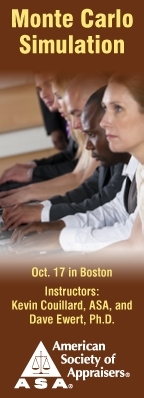| Court tosses out record $358 million reasonable royalty award
After more than six years in litigation, last April software developer Uniloc won a record $358 million against Microsoft for patent infringement. It was the second-largest verdict this year and the fifth-largest patent jury award in U.S. history, according to Bloomberg. Microsoft vowed to appeal—and just last week the U.S. Court of Appeals for the Federal Circuit overturned the verdict in Lucent Technologies, Inc. v. Gateway, Inc., 2008-1485, -1487, -1495 (Sept. 11, 2009) The same sources are now saying the decision could “alter how damages are calculated.”
Most important factor: evidence of comparable licensing agreements. During the original trial, the plaintiff’s “licensing expert” based his calculations solely on a running royalty rate, requesting $561 million in damages. Microsoft argued solely for a lump-sum no greater than $6.5 million. The jury awarded the $358 million as a lump-sum, but on review, the appellate court found three critical problems: 1) the jury heard no evidence how consumers would use the patented software; 2) it heard little explanation how a reasonable royalty agreement could help prove a lump-sum; and 3) the comparables offered by plaintiff’s expert were “far different” than the licensing agreements the parties might have negotiated. In fact, the damages evidence “was neither very powerful, nor presented very well by either party,” the court said, in remanding the case for yet another trial on damages.
This time around, the experts might look at KtMine. ktMINE™ is the only interactive IP database that provides damages experts direct access to royalty rates, source licensing agreements, and detailed agreement summaries. ktMINE finds and analyzes market comparables from over 13,000 public royalty rate, licensing, and lump sum agreements.
Another family limited partnership succumbs to bad proof
The Heckermans wanted to teach their two young children the value of “working for their money.” On the advice of legal and financial counsel, they established a trust for each child and also an Investments LLC, which was solely owned by a Family LLC. On January 11, 2002, they transferred $2.85 million in mutual funds to the Investments LLC. Notably, they also:
- Transferred 1,217.65 units in Family LLC to each of their children on Jan. 11, 2002;
- Signed gift documents stating that the assignments were effective on that date;
- Provided the IRS a document stating that the childrens’ trusts were admitted as members to the Family LLC, effective Jan. 11, 2002; and,
- Provided an appraiser the valuation (gift transfer) date of Jan. 11, 2002.
The appraiser valued each child’s minority interest in the Family LLC at $511,000, and then applied a substantial (58%) discount for lack of marketability. Listing the discounted values of the LLC transfers on their tax returns, the Heckermans concluded no gift tax was due—but the IRS begged to differ, saying the transfers were really indirect gifts of $511,000 cash to each child. Because the transfers of cash and LLC units took place on the same day, they were part of a plan to pass the cash to the kids in a tax-advantaged form, and under the step transaction doctrine, they should be collapsed into a single action.
At trial, the taxpayers tried gamely to show that the cash transfers took place before the transfers of LLC units—but in Heckerman v. Comm’r, 2009 WL 2240326 (W.D. Wash.)(July 27, 2009), the federal district court noted the “plethora” of objective evidence that all transfers took place on the same day. It also cited recent Tax Court cases to find that the transfers were not only indirect gifts of cash, but were also a single action under the step transaction doctrine.
Where can you hear the latest on FLP valuation, including the step-transaction doctrine, recently resurrected by the IRS to attack asset transfers? Register for the 2nd Annual University of San Diego School of Law Business Valuation and Tax Summit on October 9, 2009, co-sponsored by BVResources. The all-star agenda includes an FLP update, case application of DLOM methodologies (by Jim Hitchner, Linda Trugman, Jay Fishman, Kevin Yeanoplos, and Bob Duffy), plus Nancy Fannon discussing, for the first time, her new data to support calculations of the effect of shareholder taxes on value in the private markets. For more information and to register, click here.
Valuing financial services firms in a troubled economy
Thomson Reuters and the Association for Corporate Growth (ACG) report that, worldwide, the volume of total announced deals dropped 28% during the first three quarters of 2008, compared to the record-breaking first three quarters of 2007. “Interestingly,” notes Steven Levitt, co-founder of wealth management firm Park Sutton Advisors (New York City) in a recent special report to Business Valuation Update™, “of this total, M&A deals in the mid-market (under $500 million) fared better. Less reliant on the global credit markets, they declined only 16%, with a total value of $569.6 billion.”
Market pressure on assets under management (AUM) has complicated financial firm valuations: When AUM drops, profitability drops, translating to a decline in a firm’s value. “The number of firms at risk of failing has clearly increased,” Levitt says, “and some bottom-fishers, including numerous private equity groups, are on the prowl for bargain basement prices.” Valuations are particularly difficult when the sale discussions reach the later stages, requiring appraisers to make certain key assumptions and adjustments in their assessments.
If you include financial services firms among your clients, tune into “M&A and Valuation in the Financial Services Space in the Current Market” on Thursday. The latest in BVR’s Industry Spotlight Serious, this 100-minute teleconference features Levitt along with fellow-experts Craig Jacobson, Clarke Locke, and Alan Schachter. Two CPE credits are available for listeners. For more information and to register, click here.
It’s doubtful the estate tax—and FLP discounts—will disappear next year
Here’s how one law firm cleverly describes the current situation: “Almost like magic, the federal estate tax will disappear on January 1, 2010 and reappear on January 1, 2011 with a much lower federal estate tax exemption of $1 million per individual and an elevated federal estate tax rate as high as 55%—unless those magicians in Congress can conjure up a spell, or pass a bill, to reform the federal estate tax prior to the magical expiration date,” begins a new article in Corporate & Finance Alert, (Gibbons Law, P.C.).
There are four proposals currently pending before Congress: the Pomeroy Bill (H.R. 436), the Baucus Bill (S. 722), the Mitchell Bill (H.R. 498), and the McDermott Bill (H.R. 2023) (the details of each are outlined in the Gibbons Law article above). Of the four, only the Pomeroy Bill would eliminate valuation discounts for any transfer of non-business assets (stocks, bonds, real estate, etc.) in connection with family partnerships and LLCs (see BVWire # 77-4). Another source: the Treasury’s recently released General Explanations of the Administration’s Fiscal Year 2010 Revenue Proposals (the so-called “Greenbook”) reflects the Obama Administration’s proposals that would keep estate and gift tax rates at current 2009 levels.
“Congress will at the very least pass legislation before the end of the year to continue the current federal estate tax exemption of $3.5 million per individual and a maximum federal estate tax rate of 45% for one more year,” the Gibbons article says. Both the House and Senate 2010 budget resolutions, already passed, accommodate the status quo. “Overall, we can expect that the federal estate tax will not disappear in 2010, but will continue in its present form with some modifications.”
Morningstar’s new, improved bankruptcy prediction model
Given the increased likelihood that appraisers will be engaged to assess distressed companies, Morningstar’s valuation research team recently reexamined two common bankruptcy prediction models—the Z Score and Distance to Default (D2D) models. Duff & Phelps currently uses the Z-Score to rank high financial risk companies in its High Financial Risk Portfolio Supplement, and Morningstar uses the D2D model to calculate a daily “Financial Health Grade” for all public companies in its equities database at Morningstar.com.
The findings: “Distance to Default outperformed the Z-Score in both ordinal and cardinal bankruptcy prediction,” writes Morningstar’s James Harrington (Director of BV Research) and Warren Miller (Senior Quantitative Equity Analyst), in the next (October 2009) BVUpdate. “Curiously, the Z-Score’s predictive ability is nearly equal to the other model when ranking relatively safe companies but performs worse in situations when the bankruptcy probability is high. Compared to the other model, D2D also had a higher average rating just prior to bankruptcy and a lower bankruptcy rate for companies it had categorized as ‘safe’.”
As a result, Morningstar has developed a new D2D model that “better assesses a company’s health and leads to more accurate public and private company valuations.” The BVUpdate article is based on Miller’s original whitepaper, “Comparing Models of Corporate Bankruptcy Prediction: Distance to Default vs. Z-Score,” now available as a free download from Morningstar.
TAF releases toolkit on Contributory Assets/Economic Rents
Last week The Appraisal Foundation (TAF) released an Exposure Draft of its “Toolkit for Use with Best Practices in Valuations for Financial Reporting, The Identification of Contributory Assets and the Calculation of Economic Rents.” The Toolkit is available for download here.
The Work Group encourages written comments by October 11, 2009, by email to commentsCACs@appraisalfoundation.org; or by mail to The Appraisal Foundation, 1155 15th Street, N.W., Suite 1111, Washington, D.C. 20005; Attention: Paula Douglas Seidel.
Comprehensive, due diligence checklist for solvency experts
The current edition of Insights magazine (Willamette Management Associates) focuses on bankruptcy, including a comprehensive checklist on the procedural due diligence, data collection, management interviews, and all-important analysis in forming solvency opinions. “The legal and financial considerations related to preference payments, fraudulent conveyances, and/or other bankruptcy-related solvency analysis issues are complicated,” the article says. Its list of 100+ points provides a useful tool in combination with the appraiser’s experience and judgment.
Get more Insights on expert valuation analysis at BVResearch™, which now boasts over 380 articles from Willamette’s Insights, in addition to the largest, searchable database of business valuation whitepapers, articles, industry surveys, key court case abstracts, first generation materials and data, teleconference transcripts and more.
International organizations release MOU on valuation standards
The International Federation of Accountants (IFAC) and the International Valuation Standards Council (IVSC) have just signed a memorandum of understanding to enhance their respective impact on valuation issues, “particularly those related to improving the consistency of global valuation standards affecting the preparation and audits of financial reports,” says their news release.
“Valuation standards, coupled with clear accounting and auditing principles, are key to the efficiency of the global market economy,” says Michel Prada, Chair of IVSC’s Board of Trustees. The MOU demonstrates “the cohesive and united approach of the IVSC, IFAC and the International Auditing and Assurance Standards Board (IAASB) to maintaining standards as global markets continue to develop.”
To ensure this email is delivered to your inbox,
please add editor@bvwire.com to your e-mail address book.
We respect your online time and privacy and pledge not to abuse this medium. To unsubscribe to BVWire™ reply to this e-mail with 'REMOVE BVWire' in the subject line or click here. This email was sent to %%emailaddress%%
Copyright © 2009 by Business Valuation Resources, LLC
BVWire™ (ISSN 1933-9364) is published weekly by Business Valuation Resources, LLC
Editorial Staff | Advertise in the BVWire | Copyright Notice
|




